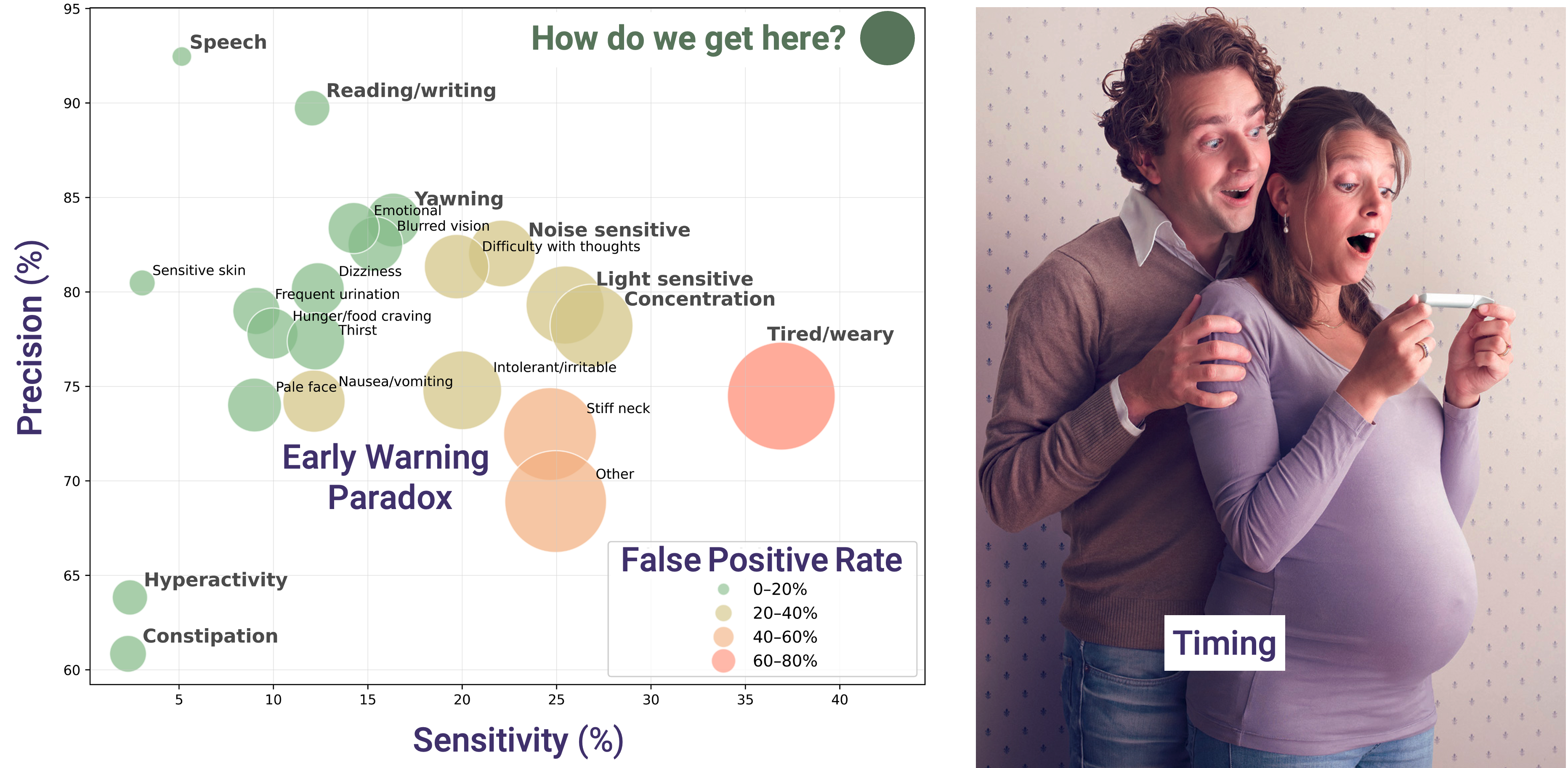Take Back Control
People living with migraine take back control by treating it more intelligently.
We believe the holy grail lies in preemptive therapy — not just suppressing or stopping the attack, but reshaping how the brain responds to migraine altogether.
Achieving this requires forecasting migraine — identifying the window when the brain is most plastic and the attack can still be bypassed entirely. It’s a fleeting opportunity — not just to stop the current episode, but to reshape how the brain responds to migraine in the future. That’s the long-term vision: from interruption to resilience.
Getting there means overcoming five core challenges. And it calls for two kinds of intelligence:
One is sensing — noticing subtle signs and interpreting patterns that may point to an oncoming migraine.
The other is signaling — actively using digital tools to probe how the brain responds, revealing instabilities before symptoms fully unfold.
Because this combination is so foundational, we’ve given it a name that’s easy to remember: Sense & Signal™.
Sense & Signal™ is more than a catchy name — it reflects a deeper logic. Preemptive therapy depends on metrics: how early we can detect a shift, how often the signal is right, and how many false alarms we risk along the way. Each of these is a challenge. And together, they shape how — and when — we act.
That’s why we’ve broken the road to preemptive therapy into five core challenges. Each one sharpens the tools we need. Each one brings us closer to resilience.
The 5 Challenges for Preemptive Therapy

»Success, therefore, is not about the episodic, momentary victories, though they do play a role. It is about the longer view of incremental steps that produce sustained progress.« — Atul Gawande, In: The Heroism of Incremental Care
Our approach to migraine forecasting isn’t about replacing traditional care — it’s about strengthening it. As Atul Gawande described in his landmark New Yorker article on incremental medicine, real progress often comes step by step. People with migraine need that same steady, long-term support — and so do their doctors. That’s the spirit behind our work.
Below, we introduce five key challenges on the path toward preemptive migraine therapy — not as fixed answers, but as a roadmap in progress. In each section, you’ll also find links to other parts of the site where you can explore resources designed to support early symptom awareness and preview the first generation of signal-based testing tools.
Read about Challenge 1 – Increasing Sensitivity
Explore our 30-year journey – Charting the course for tomorrow’s migraine care.